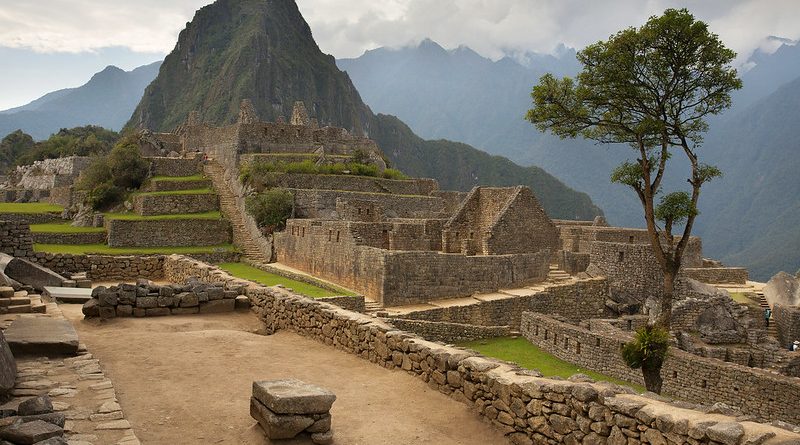
Empire Builders – The Maya
In this episode of Empire Builders we explore the remarkable history of one of the world’s greatest ancient civilisations, the Maya, travelling through the remote jungles of Central America to discover the extraordinary history of the grandest and most spectacular cities inhabited by the Maya.
Yaxha, Guatemala (3rd – 6th Century AD)
Hidden in the remote jungle of northern Guatemala, the spectacular lost city of Yaxha wasn’t discovered until the early 20th century, despite the massive size of its temples and pyramids. Substantially cleared of its jungle overgrowth only in recent years, it’s now a remarkable sight.
(7th Century AD)
When Palenque’s greatest ruler Pacal the Great died in 683 AD at the then remarkable age of 80, he was buried beneath a fabulous funerary monument, today known as the Temple of the Inscriptions. Palenque is adorned with many other magnificent buildings constructed by Pacal the Great, yet mysteriously only just over 100 years after his death the once great city was utterly abandoned…
Copan, Honduras (8th Century AD)
Copan is renowned for its Hieroglyphic Stairway, the longest known Maya hieroglyphic text. Following the modern rediscovery of many ancient Maya cities lost in the jungle for nearly 1000 years, Maya hieroglyphs were once completely unreadable, but the language has been substantially deciphered in recent decades, providing priceless insights into the history of the ancient Maya.
Tikal, Guatemala (8th Century AD)
A huge city, covering over 6 square miles, with a population of perhaps as many as 100,000, remarkably Tikal was built in very difficult terrain without any water source apart from rainwater. Towering above the rainforest, the spectacular 150-feet-high Temple 1 (which famously featured in ‘Star Wars’) contains the tomb of probably the greatest king of Tikal, buried inside in 734 AD.
Uxmal, Mexico (9th – 10th Century AD)
Built not in the rainforest, but in the arid Puuc region of Mexico’s Yucatan Peninsula, this site as a result is one of the best preserved of all the ancient Maya cities. The city may well have been abandoned in the 11th Century due to a severe drought, and the vital importance of rainwater to the city’s survival is indicated by the many images of the Maya rain god Chaac decorating the city’s temples.
Chichen Itza, Mexico (10th – 12th Century AD)
One of the most magnificent of all ancient Maya cities, the centrepiece here is the great Temple of the Feathered Serpent, otherwise known as El Castillo. Recent evidence suggest it may have been built on top of a huge cenote (a circular sinkhole common in the Yucatan, vitally important in this arid region for allowing access to the underground water table). Linked by a causeway to El Castillo is another cenote still open to the elements, the famous ‘Well of Sacrifice’, in which archaeologists have found numerous skeletons of people sacrificed by the Maya to the rain god Chaac.
(13th – 16th Century AD)
One of the most recently built ancient Maya cities, thriving from the 13th Century onwards, this spectacularly located trading port on the cliffs of the Yucatan coast was one of the few Mayan cities still occupied when the Spanish conquistadors arrived in the New World in the early 16th Century.
Mixco Viejo, Guatemala (15th – 16th Century AD)
Within a few decades of the first Spanish ships sailing past Tulum in 1518, most ancient Maya cities in Central America that remained occupied had been captured by the Spanish. The Maya’s greatest weakness was that they had never formed a unified empire, but comprised instead a series of competing city-states or ethnic groups. Using the age-old tactic of ‘divide and rule’, the Spanish played off one Maya group against another before turning on the first. The Kaqchikel Maya at Mixco Viejo, in the Guatemalan highlands, initially allied with the Spanish in order to defeat their longstanding Quiche Maya enemies, but were soon defeated and subjugated themselves.
Flores Island, Guatemala (1697)
Here on an island in a lake in the remote jungle of northern Guatemala the last unconquered Maya kingdom made a heroic but doomed last stand against the Spanish. On 13th March 1697 the city was finally captured, marking a sad end to well over 1000 years of proudly independent Maya history.
More information:
Read: Lasting Impressions: Frederick Catherwood’s drawings of Maya Ruins
Read: The Looting of Mayan Ruins in Uaxactun
Read: The Magnificence of Mayan Structures
Credits
narrator
BOB BLYTHE
*
titles & graphics
MARTINA DEO
CGI artist
SIMON ROSS
*
camera
GARY ROGERS
NIGEL KINNINGS
*
facilities
GUILTFREE POST
dubbing mixer
CHRIS MORRIS
*
editors
ALEKSANDAR NIKOLIC
online editor
DANNY DAVIS
*
title music
PAUL MOUNSEY
music by
PAUL MOUNSEY
THE INSECTS
JON WYGENS
MARK TAYLER
MICHAEL CONN
MALCOLM LAWS
NAINITA DESAI
COLIN WINSTON FLETCHER
*
post production coordinators
EMILIO REY
JAKE CHRISTIAN
production accountant
RASHIDA PATEL
production manager
TARA BENSON
*
executive producer
IAN CROSS
*
produced and directed by
CHRIS LEDGER
*
Produced by Pilot Film and TV Productions
© Pilot Productions MMXVII
